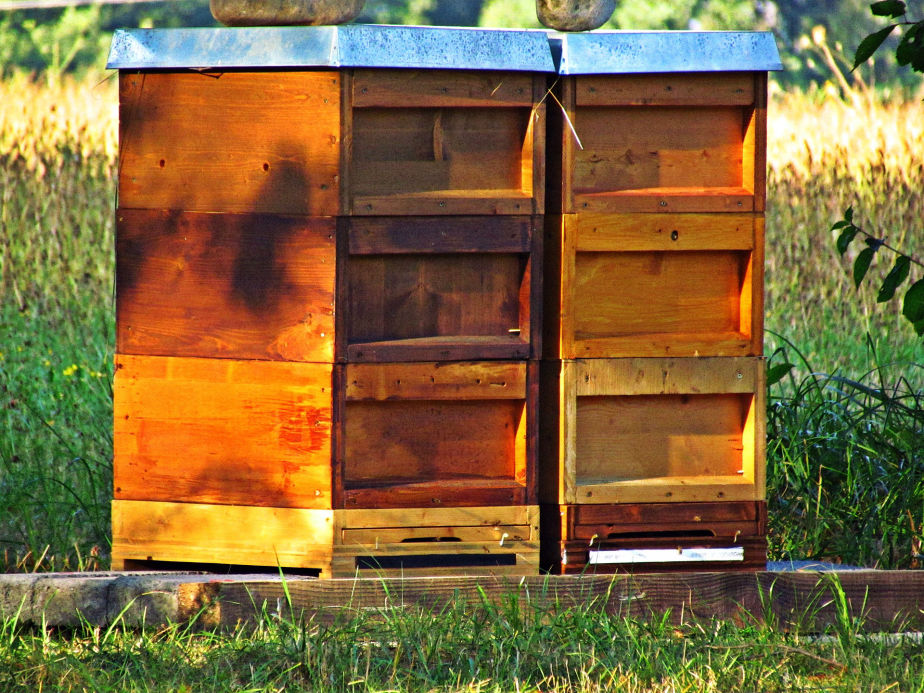
Moveable frame beehives
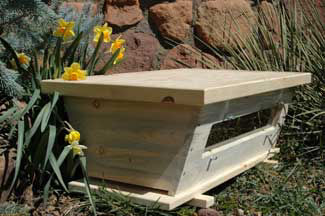
Top bar beehive
There are lots of different beehives, but really only 2 major types - moveable frame beehives and top bar hives.
In the Western world, moveable frame beehives are the most common, but there are dozens of different designs. Generally the parts of each are not interchangeable, so you are best to pick one type of beehive and stick with it.

Moveable frame beehives

Top bar beehive
The most common designs of moveable frame beehives are
- the Langstroth Hive
- the National Hive
- the Commercial Hive
- the WBC Hive
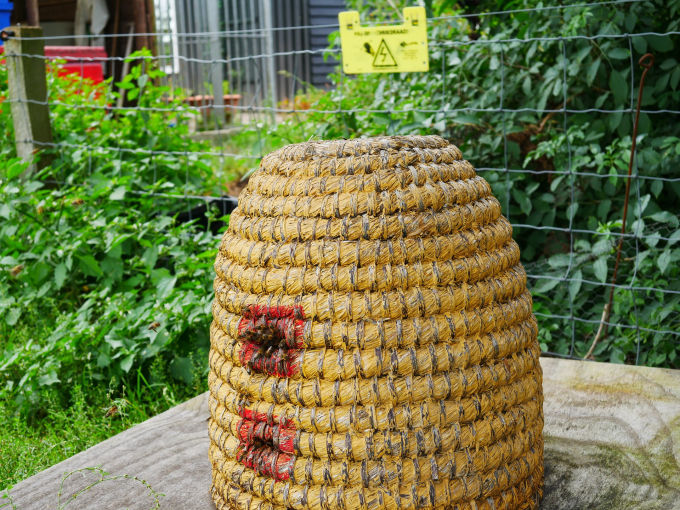
Before the invention of the modern beehive, bees were kept in upturned baskets called skeps.
When the honey was harvested the colony was destroyed and all the bees killed, which was obviously not good for either the bees or the beekeeper.
He calculated that 3/8 inch was the ideal space between any 2 surfaces in the hive.
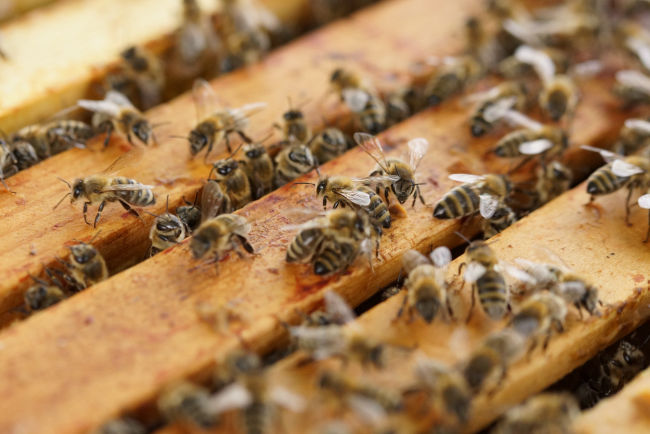
Langstroth then designed a beehive where the frames could be easily removed, and where all the gaps between the frames, around the walls and above and below the frames were exactly 3/8 inch.
This meant that the frame could be lifted out without destroying the hive, and was truly revolutionary. Rev. Langstroth is still considered the "Father of American Beekeeping."
All modern moveable frame beehives are still based on the Langstroth Hive, and the Langstroth hive itself is still the most commonly used beehive today - especially in the United States. It is a simple hive in construction and easy to maintain and, especially if it is common in your area, is often a good choice.
The promise of well pollinated gardens and a gift of a jar of delicious home produced honey can do wonders to bring wary neighbours on board :)
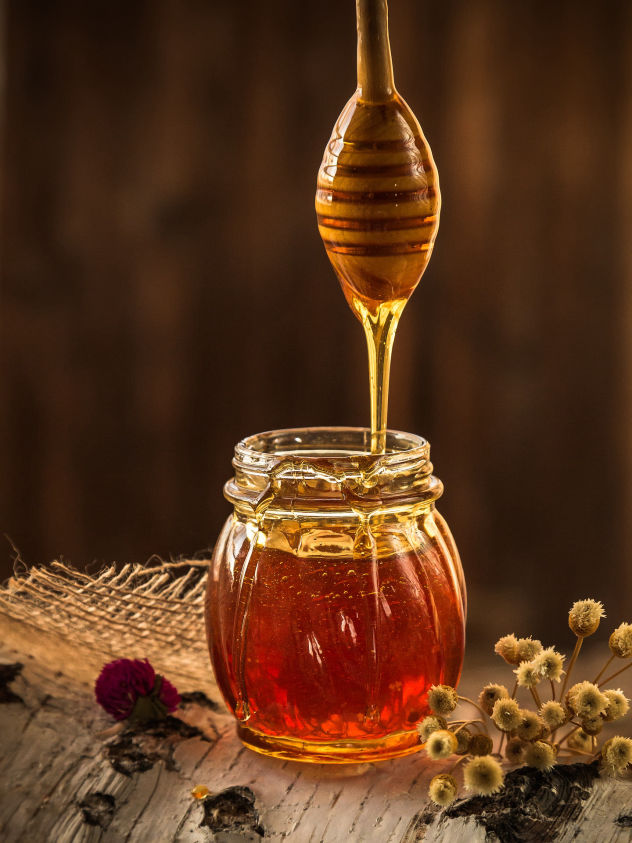
The National Hive is a variant on the Langstroth, and is the most common hive in the UK. It has a much smaller brood box than the Langstroth.
Some beekeepers argue that it has too little brood area for the modern productive bee. Although you can overcome this by adding on another super to the brood box (known as a "brood and a half"), one drawback is that it makes it more difficult to locate the queen.
The supers (the part of the hive where the honey is stored) are also smaller, and this has the advantage that they are much easier to handle when full of honey.
The WBC Hive is the classic traditional beehive, named after its designer William Broughton Carr.
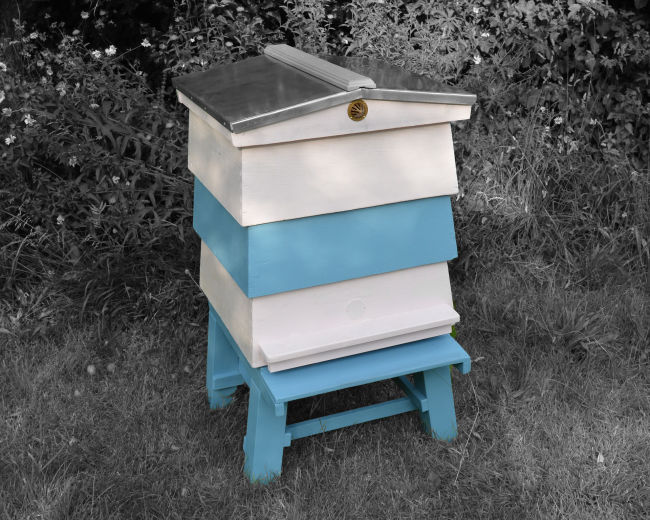
Unlike the other moveable frame hives which are single walled, the WBC hive is double walled. The outer part is made up of pyramid sections, giving the WBC it's distinctive look. The inner part is separate loose boxes which contain the frames.
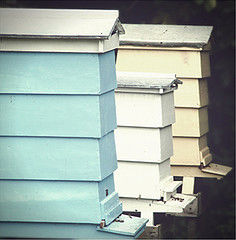
But they do look very pretty :)
There are many other beehive designs based on the Langstroth hive. The Dedant is popular in France, the Smith common in Scotland, and too many others to mention have their regional followers.
Which one you choose will be influenced by a lot of factors, including price, materials, availability, and local conditions. A good general guide is stick to what is popular with local beekeepers in your area - a beehive which works for them will likely be a good beehive for you too.
Top bar hives are a totally different design of beehive. Whereas Langstroth type hives have full frames with 4 sides complete with wax foundation, a top bar hive just has bars along the top (hence the name). The bees build their own honeycomb on these bars, and this is removed completely at harvest time.

Top bar hive
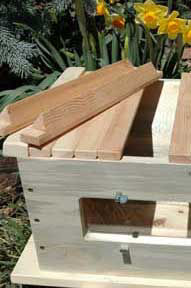
Triangle top bars
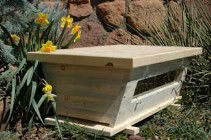
You then transfer these frames to your hive, and as they already contain brood, honey and pollen, your bees will get off to a much better start.
Top bar hives are less complex in their construction than Langstroth type hives, and can be built from many different types of materials. This makes them particularly suited to developing countries where resources are scarce and beekeeping isn't yet so "industrialized".
These attributes are making the top bar hive more popular in the western world as well. If you intend to build your own beehives (as opposed to buying them ready built), their simplicity means that you will not need expensive carpenter tools or advanced skills
If you intend to buy your hives, top bar hives are generally a much cheaper option. Again, their simplicity means that they are very few extra internal parts to buy.
Really, all a top bar hive is is a box with wooden bars along the top. The bees then start from scratch, the same as they would in the wild, for example establishing a colony in a hole in a tree. So with a top bar hive you do not use foundation wax (the wax on the frame that the bees 'draw out' on a standard beehive).
As well as being cheaper to buy, ongoing maintenance costs should also be lower.
Harvesting of honey from top bar hives is very simple. Because there are no frames, there is no need for a centrifugal spinner or other expensive honey harvesting equipment to extract the honey.
You simply cut the honeycomb off, and either use it as comb honey, or else crush the honey comb and sieve it to produce liquid honey which you can then bottle as normal.
Since you 'harvest' the wax every season, the amount of wax produced from top bar hives is much greater than from Langstroth hives. The downside is that there will be less honey produced (see below), but beeswax is itself very valuable.
It can be used for making candles, furniture polish, soaps and cosmetics, and many other products. Making your own beeswax products is a whole new hobby in itself!
The biggest drawback with top bar hives is the amount of honey produced. If managed properly, bees in a Langstroth type hive will produce much more honey than bees in a top bar hive.
With Langstroth hives, the honeycomb is replaced after harvesting the honey every season, and so can be reused by the bees again and again.
In standard beehives, the bees have ready made frames to use as a starting point. But since there are no frames to guide them, the honeycomb tends to be more freeform in top bar hives.
Because of this, you may have problems like attachment to the side of the hive, and cross-combing (where bees build the honeycomb attached across several bars). This does make management of the hive more tricky, especially in terms of essential treatments such as for varroa mites or foulbrood.
On the flip side of that, the more natural approach is to leave the bees to their own devices and keep intervention to a minimum in any case.
Also, modern top bar hives are carefully engineered to keep this problem to a minimum.
Because of the freeform nature of honeycomb building, top bar hives may require some more attention from the beekeeper to stop side attachment and cross combing before they become big problems. On the other hand, there are no supers to add or remove, so less work in this respect (although of course this is not the case with the Warre hive - see below).
A variant of the top bar hive is the Warre hive (pronounced war-ray). This was designed by French beekeeper Abbe Warre, and was intended to be as close as possible to the bees' natural home.
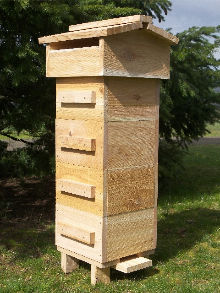
On the lookout for some bargains?
Visit our Beekeeping Store
>> Click here for more...
5 pieces of beekeeping equipment that you must have
>> Click here for more...
6 questions you need to ask before you start beekeeping... and we have the answers!
>> Click here for more...
You'll find lots more information (and some great beekeeping pictures!) on the BestBeekeeping blog
>> Click here for more...
SHARE THIS PAGE!